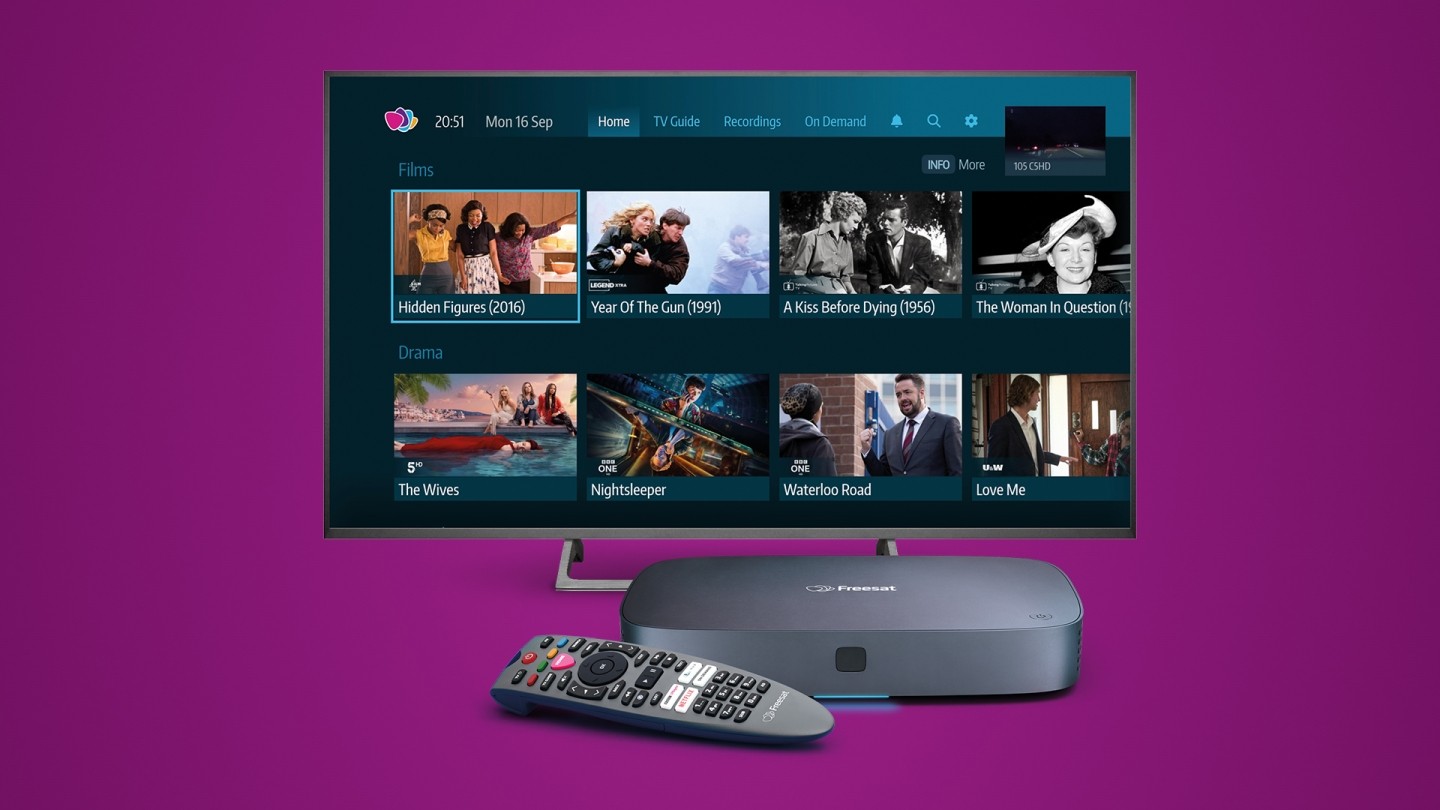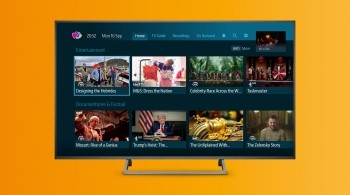Want great telly for free? Then chances are you’re trying to decide between Freeview and Freesat – but what are the differences between the two biggest free-to-view television broadcasters? Both give you access to the latest top telly without monthly fees or contracts - but how can you tell which one is the better choice for you? Let's compare...
Freesat and Freeview channels lists
Both Freeview and Freesat have some of the top TV channels around, including big must-haves like BBC One, ITV, Channel 4 and 5, as well as U&Dave, Film4, PBS America, and many more.
- Freeview currently offers 70+ channels, including 15 HD channels and 32 radio stations. However, the channels you get depend on what area you’re in.
- Freesat offers 100+ TV channels, including 30 radio stations and 25 HD channels[1] no matter where you are in the UK or the Channel Islands.
Freesat and Freeview On Demand options
Freesat and Freeview also both have the option to connect to On Demand players like BBC iPlayer, ITVX, Channel 4 and 5 via an internet connection depending on the set top box model, either via Freeview Play or the On-Demand section of your Freesat TV box.
For paid On Demand players like Netflix and Prime Video you’ll need a separate subscription and the latest set top boxes, but you’ll still get to watch it with ease on the small screen.
Freesat offers more in terms of news and radio channels, including Bloomberg and GB News, as well as channels like Virgin Radio and Absolute 80s Radio.
See the full Freesat channels list and Freeview channels list for the most up-to-date information.
Coverage: Satellite and Aerial TV
One key difference between Freesat and Freeview is the way channels arrive at your TV. With Freesat, broadcasts are delivered via satellite, while Freeview broadcasts are via aerials from transmission towers across the UK.
Both have their benefits depending on where you’re based, and both still require a set top box or a television with Freeview or Freesat built in, but for Freesat you’ll need a satellite dish installed. So, if you’re considering Freeview, it’s well worth checking the reception quality in your area by checking where the closest TV transmitter is.
Find out more about the differences between satellite and aerial TV.
What’s the difference in cost between Freeview and Freesat?
Freeview boxes range in price from around £40 to £179 depending on what features you want. If you want to be able to pause, rewind and record live TV and enjoy HD channels, you’ll need to pay a little more, but if you’re happy with just the basics you can opt for the zapper £40 set top box. Other than that, to get started you’ll need an aerial and, if you want to use the on-demand services, a minimum broadband speed of 2 Mbps.
In comparison, Freesat is more expensive upfront than Freeview, but saves you money compared to other satellite TV options. You’ll need to pay for a set top box which ranges from approximately £50 up to £269.99 depending on which one you go for. If you choose the most recent Recordable 4K TV Box, this will cost £229.99 to £299.99 depending on how many hours of telly you’d like to store to watch later.
Alternatively, you can opt to buy a television that already has Freesat or Freeview built in. This can be more expensive than buying a set top box, but if you’re looking for a whole new media setup this is a quick and easy way to get started.
You’ll also need a satellite dish to watch Freesat which can be another factor in terms of cost. If you already have a working satellite dish on your house from Sky, you can simply plug your set top box into that and start watching. If not, you can find local installers to get a quote. But once everything’s installed, you’ll get to enjoy the best of TV with no contracts or monthly fees for satellite TV, and with more channels than Freeview.
The bottom line...
To summarise, here are the main similarities between Freesat and Freeview:
- Both are free to watch after the initial cost of the set top box or TV and any applicable installation costs for a satellite dish, meaning you’re not tied to a TV subscription and don’t run the risk of TV bill price hikes[2]
- Both have a great range of HD channels
- Both have great picture quality
- 4K ready on the latest Freeview and Freesat 4K TV set top boxes[3]
- Both offer set top boxes with recording capabilities
- Both allow you to pause and rewind live TV[4]
- Connect with top streaming and on-demand services with compatible set top boxes[5]
And here are some of the differences between Freesat and Freeview which will help you decide which is right for you:
- Freesat offers more channels
- If you have poor aerial reception in your area, Freesat may give you a better quality picture, great reception and 100% channel coverage across the UK as it broadcasts via satellite rather than aerial.[6]
Get started with Freesat or Freeview and more about switching providers. Got any more questions for us? Head to our FAQs page to find out more.



